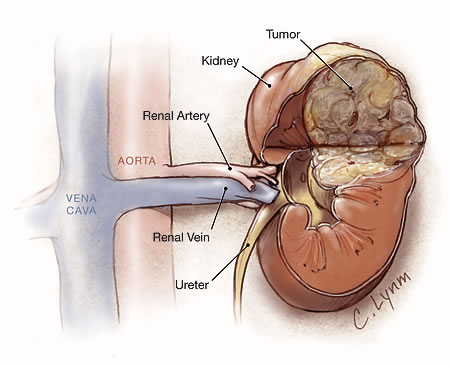Nephrologists and Urologists Collaborate on Implantable Artificial Kidney
Four years ago, a joint effort was established between nephrologists and urologists at the Cleveland Clinic Glickman Urological and Kidney Institute to develop and implant a bioartificial kidney. The bioartificial kidney uses a high-efficiency biomimetic silicon nanopore filter that acts synonymously as a glomerulus, in combination with a kidney epithelial cell bioreactor that allows for reabsorbtion of essential electrolytes from plasma filtrate (Figure 1). A Phase 2 trial of an extracorporeal system utilizing these technologies was completed in 2005. Current efforts have been aimed at miniaturization of technology to facilitate implantation of a miniaturized biohybrid device.
This project has been funded by the National Institute of Biomedical Imaging and Bioengineering, the Wildwood Foundation, Cleveland Clinic, and the University of California, San Francisco. Nephrologists and engineers involved with inception and initial development of the project include William H. Fissell, MD (Cleveland Clinic), Aaron J. Fleischman, PhD, (Cleveland Clinic), Shuvo Roy, PhD (University of California, San Francisco) and H. David Humes, MD (University of Michigan). At Cleveland Clinic, Dr. Fissell, a clinical nephrologist, has teamed with Matthew N. Simmons, MD, PhD, a urologic oncologist to develop prototypes suitable for surgical implantation. Dr Fissell has a background in biomedical engineering and oversees design and construction of the components of the device. Together, Drs. Fissell and Simmons work through the processes of design modification, surgical implantation, in vivo device maintenance, and functional monitoring. To date they have implanted four hemofilter devices, the last of which remained in vivo for five days.
This project is a model example of the advantages of direct partnership between nephrology and urology colleagues. Dr. Fissell and colleagues provide expertise in terms of materials engineering and renal physiology to develop a device capable of reproducing kidney function. In partnership with Dr. Simmons and the urology team, they are steadily advancing the transformation of the device from concept to an implantable reality. It is hoped that the success of this research may eventually impact the lives of millions of patients with kidney disease.




